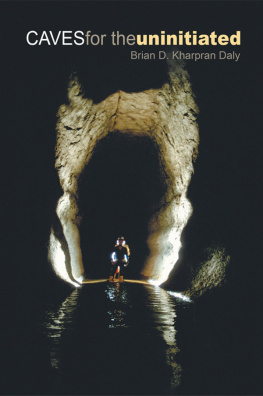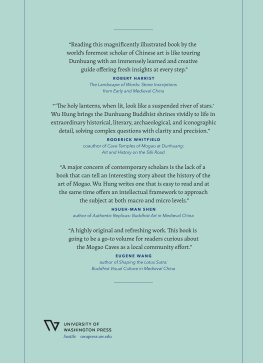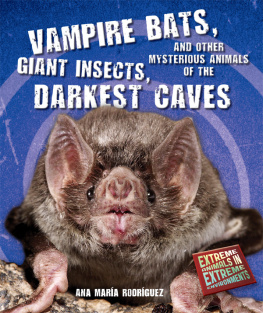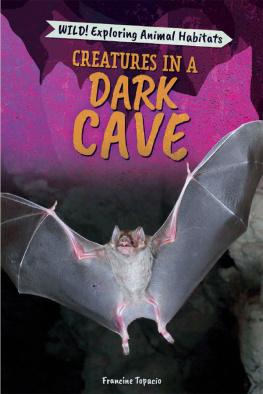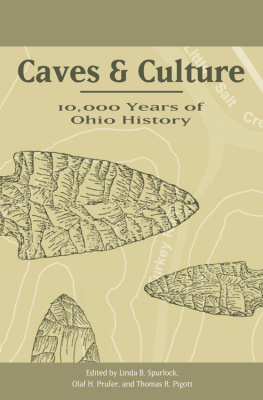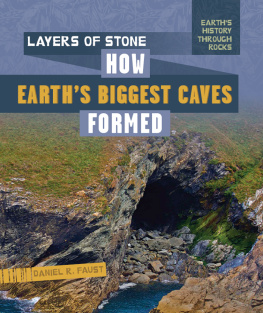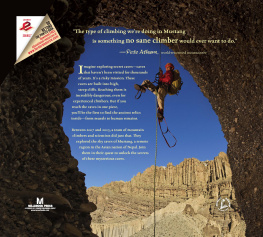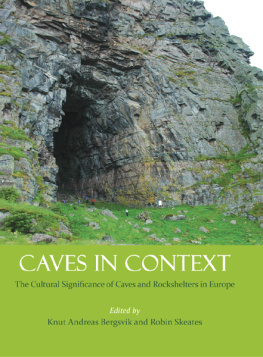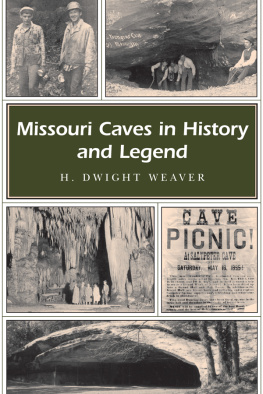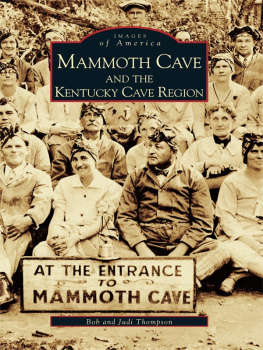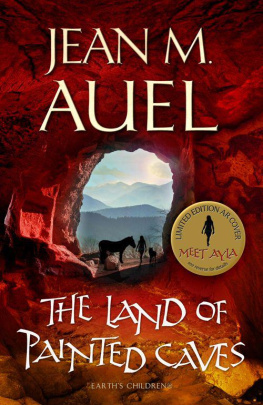Caves for the Uninitiated
By
Brian D. Kharpran Daly

Strategic Book Publishing and Rights Co.
E-book edition 2013
Print edition 2013 Brian D. Kharpran Daly - ISBN: 978-1-61897-470-9
All rights reserved.
No part of this book may be reproduced or transmitted in any form or by any means, graphic, electronic, or mechanical, including photocopying, recording, taping, or by any information storage retrieval system, without the permission, in writing, of the publisher.
Strategic Book Publishing and Rights Co.
12620 FM 1960, Suite A4-507
Houston TX 77065
www.sbpra.com
ISBN: 978-1-62857-805-8
DEDICATION
To Sylvia Kharpran, my mother
ACKNOWLEDGEMENTS
I would like to express my gratitude to the Meghalaya Adventurers Association and to the project Caving in the Abode of the Clouds. My sincere thanks to all the cavers involved in all the Meghalaya cave expeditions, especially Simon Brooks, Daniel Gebauer and Thomas Arbenz, who have been the force and mainstay behind these expeditions. I thank my wife, Maureen, for bearing with me the mess we make in the house, before and after, every expedition; my son Lindsay and my daughter Shelley for their support and love in taking part in the expeditions; my nephews Gregory, Dale, Teddy, and Ronnie; and all my friends. I also thank the government of Meghalaya, through the Directorate of Sports and Youth Affairs, whose continued help has been a great blessing for the documentation of the caves of Meghalaya.
Illustrations on pages 8, 11, 12, 16, 20, 30, 43, 64, 65, 68 by Thomas Arbenz, on Pages 22, 26, 47, 53, 66, 69, 70, 84, 85, 86, 87, 89 by W. Bryan Khongwar and drawings on pages 92, 96, 102, 103, 107, 108 are by Marina Arbenz.
Cover photo: Tetengkol Balwakol (photo by Simon Brooks).
PUBLISHERS NOTE
Caving is a sporting activity that is inherently dangerous. Any person undertaking it, especially if inexperienced, should approach it with caution. The publisher and author can accept no responsibility for any accidents, injury, or loss suffered by any reader, however that may be caused.
TABLE OF CONTENTS
INTRODUCTION
The mysteries of caves have for so long been beyond the imagination of man. They were believed to be places where spirits of the dead resided, either as evil and harmful ghosts or as friendly spooks. The Romans believed caves to be the abode of the gods Pan, Zeus, Dionysus, and Pluto; others believed caves to be the domain of dragons, fairies, tokoloshes, etc. For the romantic, caves became a treasure house of wealth, knowledge, adventure, and scientific discoveries. For most, caves were a dread, as they were the Gateway to Hell. Early man used caves as refuge from the ravages of nature and wild animals, and later, in their desire to protect their culture and religion, they used the deeper part of the cave to preserve their beliefs in drawings, which have survived to this day. But all in all, caves have always been an enigma.
It was only as late as the second half of the seventeenth century when modern man began to tentatively probe the eternal night of the dark, unknown, mysterious subterranean world, when in 1689, Johann von Valvasor mentioned a cave-dwelling creature, the now famous proteus of the Adelsberg Grottoes, which are today known as the Postojnska Jama. A hundred years later a description of another cave-dwelling creaturea subterranean crabwas reported. However, it was only during the second half of the nineteenth century when caving clubs began to be established in Europein France, Germany, and Austria, and later on in the United Kingdom. Out of those early cave explorers, some of the names that clearly stand out are those of Dean William Buckland, Edouard Martel, F. Kraus, and Norbert Casteret, to name a few.
The first half of the twentieth century saw more caving clubs spring up, albeit with few members, but it was the beginning of a more serious and systematic exploration and mapping of the subterranean passages. The second half saw improvement in caving equipment; hats replaced with helmets, candles with carbide lamps, rope and wooden ladders with wire and aluminium ladders, and a new method of accessing deep vertical caves or shafts by prusiking or single rope technique (SRT). The beginnings of a systematic and more purposeful order of cave explorations began to take shape, which dramatically leaped into a much higher level, with the carbide lamps giving way to LEDS, the survey instruments of compass, clinometer and tape giving way to the laser Disto X, PDA and the computer software for cave surveying taking a new dimension.
Today there are caving clubs all over the world; at least, where there are karst areas. A better understanding of the subterranean world and its unique eco-system is now emerging. New forms of troglobitic animals have been documented, shedding more light on the evolution of life. Scientists and researchers put active stalagmite specimens to isotropic analysis to reveal the history of the past climatic conditions of the world for a better understanding of what the future climate has for us. The cave with its absolute darkness holds the key to future scientific experiments, especially to life in outer space.
While the rest of the world was marching ahead on the speleological front, India was lagging behind, probably because of lack of karst of any significance, though limestone is extensive throughout the Indian Himalaya. The tiny state of Meghalaya, however, was known to have some potential, as per reports in the Bengal Gazetteer by the British administrators and officers in the early twentieth century. Some of these caves were visited and explored by inquisitive scientists like Shiba Prasad Chatterjee between 1928 and 1932, Knut Lindberg in 1947, or resident British Army officers (Allsup in 1934, Roberts in 1949), and other casual visitors like R. N. De (1932) and H. D. Gebauer (1980).
Things were then to change, when in the April of 1992, members of the Meghalaya Adventurers Association (MAA) took their first tentative forays into the two Syndai caves in Jaintia Hills. Nine months later the same caves were visited by a small group of British cavers led by Simon Brooks. It was inevitable for the two groups to meet in 1994. Since then, a collaborative partnership between the European, American, and Indian cavers blossomed into the most comprehensive and systematic documentation of the caves of Meghalaya under the project Caving in the Abode of the Clouds.
Today the whereabouts of 1300 caves are known in Meghalaya, with about 825 of them explored to yield a total length of mapped cave passage to 376 kilometers. The potential for the discovery of many more caves is enormous and is an exciting thought for any eager speleologist.
This book is aimed at the Indian layman and at the youth in particular, to create an awareness of what a cave is, its formation, its intrinsic scientific value, the dangers it poses to the novice, importance of its conservation, etc. It is just a brief guide and is in no way comprehensive and authoritative; it is the first step into the dark unknown world of the underground. The reader would do well, if he or she were to take the step, to tread softly and as he or she gropes further into the dark, to reach out for more advanced reading, training, and guidance on the subject.
Chapter 1
A FIRST CAVING TRIP
The yellow Tata Sumo came to a halt just a hundred meters from the front gate of the Mawmluh Cherra Cements Company Ltd. and parked itself behind some cement trucks; we all got out and unloaded the caving equipment from the vehicle.
There were eight of us including the driver of the Sumo. Daniel, whose love for caves is well known the world over and whose knowledge of caves and karsts is quite extraordinary, was the first to get down. A tall and lean man in his mid-fifties, he is out and out an avid speleologist in his own right, a quiet and perfect gentleman with no unassuming airs.
Next page
